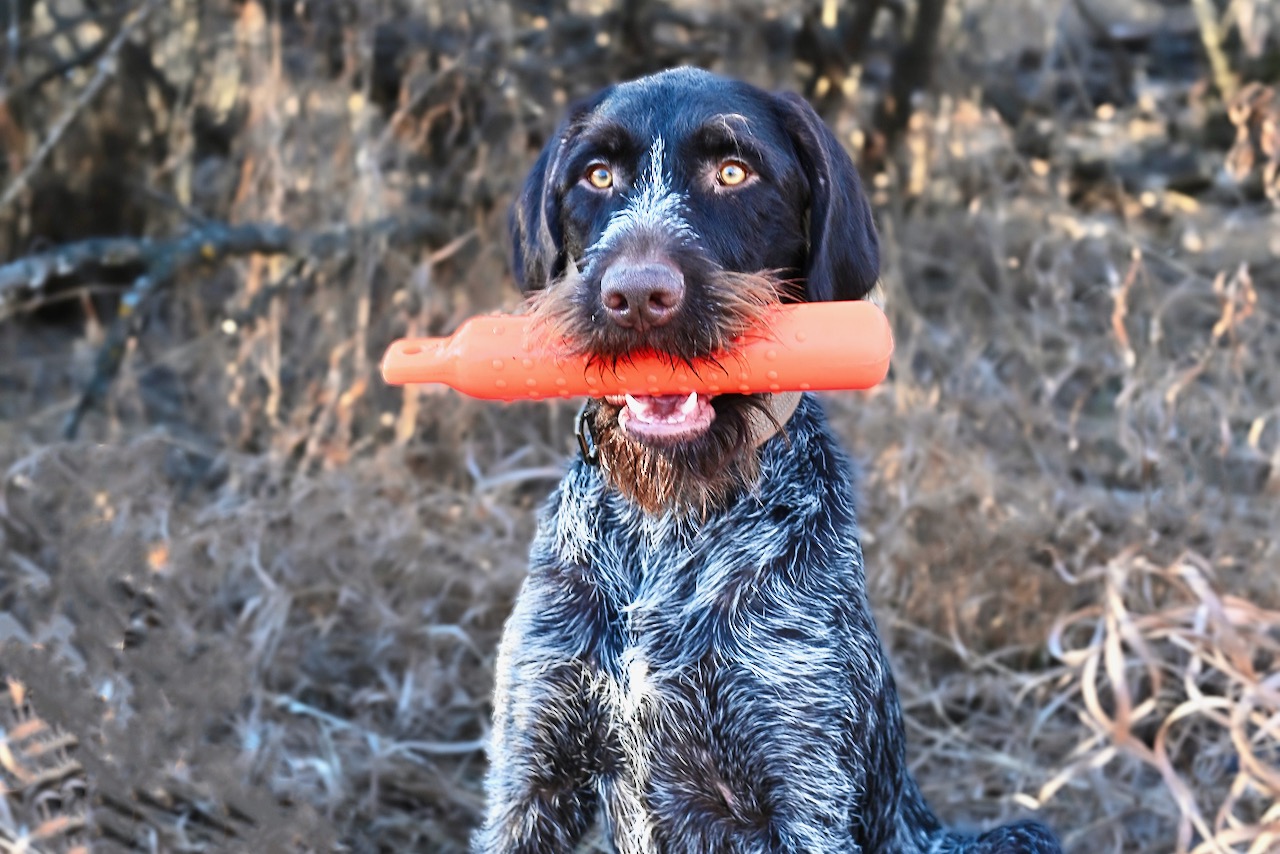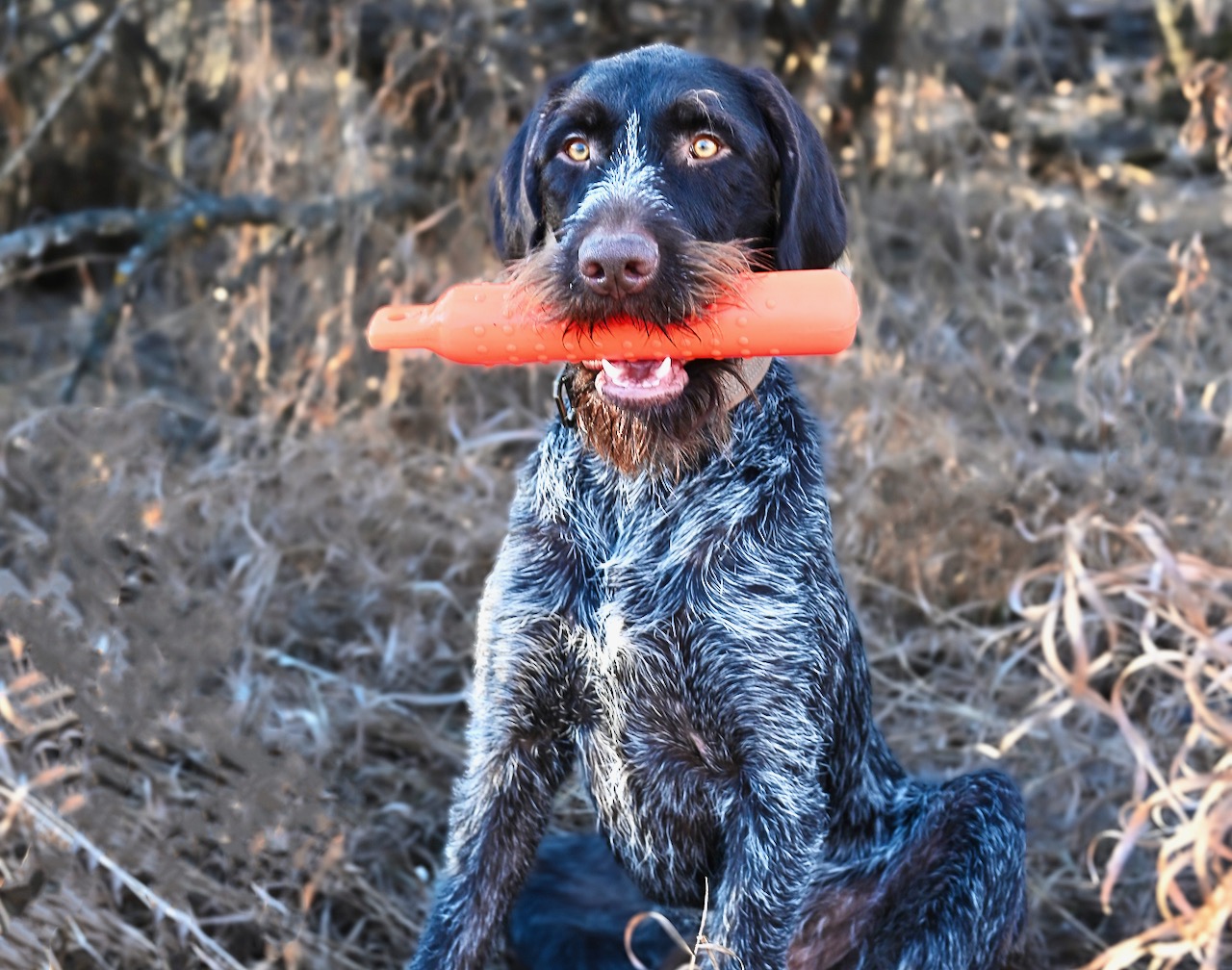VISION QUEST
Colour is important in retriever training, but not in the obvious ways
Advertisement
Over time, dogs have developed highly efficient prey-hunting characteristics, including eyesight that’s largely superior to that of humans. But while they excel at detecting motion and seeing clearly in dim light, dogs cannot distinguish between red and green.
Advertisement
Fortunately, that is less important during the prime hunting times of dawn and dusk, when shades of grey predominate. To properly train dogs to become even better hunters, however, you do need to take into account their limited colour vision. Here’s how.
SIGHT TRAINING
If a dog can see and mark a falling bird, he’s usually able to easily retrieve it. To train your dog to retrieve, command him to sit and watch while you toss bumpers, coloured specifically for the conditions at hand. Namely, use white bumpers to contrast against green or brown vegetation, and black bumpers to stand out in snow. That way, your dog will be able to easily see the bumpers when you finally give the command to retrieve.
Advertisement
SCENT TRAINING
As the name suggests, a blind retrieve is made when a dog doesn’t see the bumper (or bird) as it falls, and can’t see it on the ground. To train your dog to make a blind retrieve, use an orange bumper, which is easily visible to the human eye yet nearly invisible to the dog, especially on green or brown vegetation.
Simply plant the orange bumper in the training area when your dog is not watching, then direct him in the general direction toward it. Not being able to see the bumper, he will be forced to use his nose to find it. To add realism and enhance the training session, add bird scent to the bumper or attach an actual wing. And if the dog goes off course, give handling commands and corrections.


